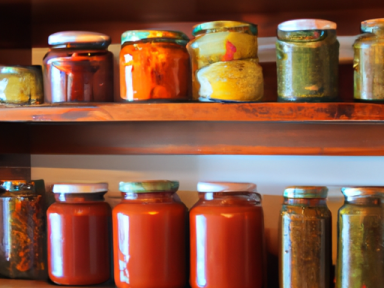
The Art of DIY Canned Vegetables: Ensuring Long-Term Food Security
When it comes to homesteading, survival, and self-reliance, one key skill to master is the art of preserving food. In times of uncertainty, having a stockpile of essential supplies is crucial, and canned vegetables are a fantastic addition to any survival pantry. By canning your own vegetables, you not only ensure a long-term supply of essential vitamins and minerals but also gain peace of mind knowing you are prepared for whatever may come.
Why Should You Can Vegetables?
There are several reasons why canning vegetables should be a priority for any self-reliant individual:
- Food Security: Canning your own vegetables allows you to build a stockpile of nutritious food that can sustain you and your family during emergencies or when fresh produce is scarce.
- Cost-effective: Buying vegetables in bulk during harvest season and canning them yourself can save you a significant amount of money in the long run.
- Nutritional Value: Canning preserves the vitamins, minerals, and enzymes present in fresh vegetables, ensuring you have access to essential nutrients all year round.
- Sustainability: By canning your own vegetables, you reduce reliance on store-bought canned goods and minimize waste from packaging.
Getting Started with DIY Canned Vegetables
Now that we’ve covered the importance of canning vegetables, let’s dive into the process. Here’s a step-by-step guide to help you get started:
Step 1: Gather Your Supplies
Before you begin canning vegetables, make sure you have the necessary supplies on hand:
- Mason jars (quart or pint-sized)
- Lids and bands
- Pressure canner or water bath canner
- Canning salt or citric acid
- A canning funnel and ladle
- Clean kitchen towels and pot holders
Step 2: Choose Your Vegetables
Select fresh, ripe vegetables from your own garden or local farmers’ markets. Opt for varieties that can withstand the canning process without losing texture and flavor. Some popular choices include tomatoes, green beans, carrots, corn, and peas.
Step 3: Prepare the Vegetables
Wash the vegetables thoroughly and remove any blemishes or imperfections. Depending on the vegetable, you may need to blanch or precook them before canning.
Step 4: Pack the Jars
Using your canning funnel, pack the jars tightly with the prepared vegetables. Leave a recommended headspace (usually around 1/2 inch). Add canning salt or citric acid to improve flavor and preserve the vegetables.
Step 5: Process the Jars
Using either a pressure canner or water bath canner, process the jars according to the specific vegetable’s requirements. Follow a trusted recipe and processing times to ensure safe and effective preservation.
Step 6: Cool, Label, and Store
Once the processing time is complete, remove the jars from the canner and allow them to cool on a clean kitchen towel. Label each jar with the contents and the date of canning. Store the jars in a cool, dark place away from direct sunlight, heat, or moisture.
Conclusion
By learning the art of canning vegetables, you are taking a significant step towards self-reliance and ensuring long-term food security. The ability to preserve the harvest’s bounty not only saves you money but also provides peace of mind knowing you have a nutritious and reliable food supply. Start small and gradually expand your canning endeavors as you gain confidence and experience. Don’t wait for a crisis to strike – take action now and build your stockpile of DIY canned vegetables!



GIPHY App Key not set. Please check settings